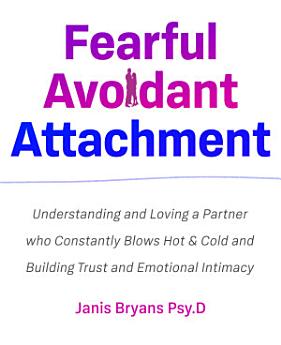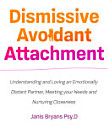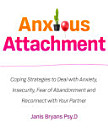关于此电子书
Does their hot & cold attitude confuse you, leaving you feeling that you can't communicate your needs?
Are you worried about drifting apart?
Attachment styles are the way that we connect with other people. They are generally developed by infants and further refined by children, adolescents and adults.
Many of the fears, beliefs and behavioral patterns you emulate as an adult are derived from how you felt in the first few years of life.
People who develop a fearful avoidant attachment style often desire closeness. They seek intimacy from partners. However, they may be unable to achieve the deep connection that they long for.
The reason for this is because their attachment experiences have taught them to be fearful of intimacy. In some cases, their personality leads them to reject close bonds. This can spur a cycle of rocky relationships and extreme emotional highs and lows.
A person with a fearful avoidant attachment lives in an ambivalent state of being, afraid of being both too close to or too distant from others.
Understanding fearful avoidant attachment can help you to understand why you react the way you do in relationships. If you believe that a loved one has this style of attachment, understanding where the instincts come from may also help you to respond to them.
People with fearful avoidant attachment may show signs of:
- Stormy, highly emotional relationships.
- Conflicting feelings about relationships (desiring a romantic relationship and being fearful of being hurt or left by a significant other).
- A negative view of themselves and elevated anxiety.
- A tendency to seek out faults in partners or friends so that they can create an excuse to leave a relationship.
- A fear or anxiety about being inadequate for a partner or relationship.
- Withdrawing from relationships when things get intimate or emotional.
- A resistance to commitment and intimacy.
They attempt to keep their feelings at bay but are unable to; they can’t just avoid their anxiety or run away from their feelings. Instead, they are overwhelmed by their reactions and often experience emotional storms.
The person who is close to a fearful avoidant may feel:
- Unvalued.
- Not good enough.
- Tentative.
- As though they are doing something wrong.
- Emotionally deprived.
- Unimportant.
- Unable to truly connect.
- Held at arm’s length.
- Confused.
- Lonely.
- Abandoned and depressed.
Such feelings, if experienced too often or too intensely, may ultimately make a relationship non-sustainable.
The good news is that you can change the attachment style. It may take time, work and a great deal of understanding from people in life. However, it is possible for to build intimate, secure relationships that fulfill and help you to feel safe.
If you do not intervene immediately, those who have a relationship with a fearful avoidant person will end up having to settle for a relationship made up of distances, misunderstandings and conflicts until the relationship is totally broken. Everything that you have built together will be lost forever.
Understanding and managing the wounds of attachment is the best gift that you can give to your relationship.






